Last Updated on January 16, 2024 by Matt Greene
There are two schools of thought when talking about which putter to use between a mallet and a blade putter.
Ping believe that if you have an arc in your stroke, you will benefit from a toe hang putter - usually blades. If you stroke the ball straight-back-and-through, then you should use a face-balanced putter - usually mallets.
Odyssey suggest if you miss most putts to the right side, a toe-hang putter will help you and if you miss more putts to the left, a face-balanced putter would play better for you.
The mallet and the blade can confuse you because they can both feature toe-hang or a balanced face. I'll run you through the differences to clear up exactly how blades and mallets can work for you.
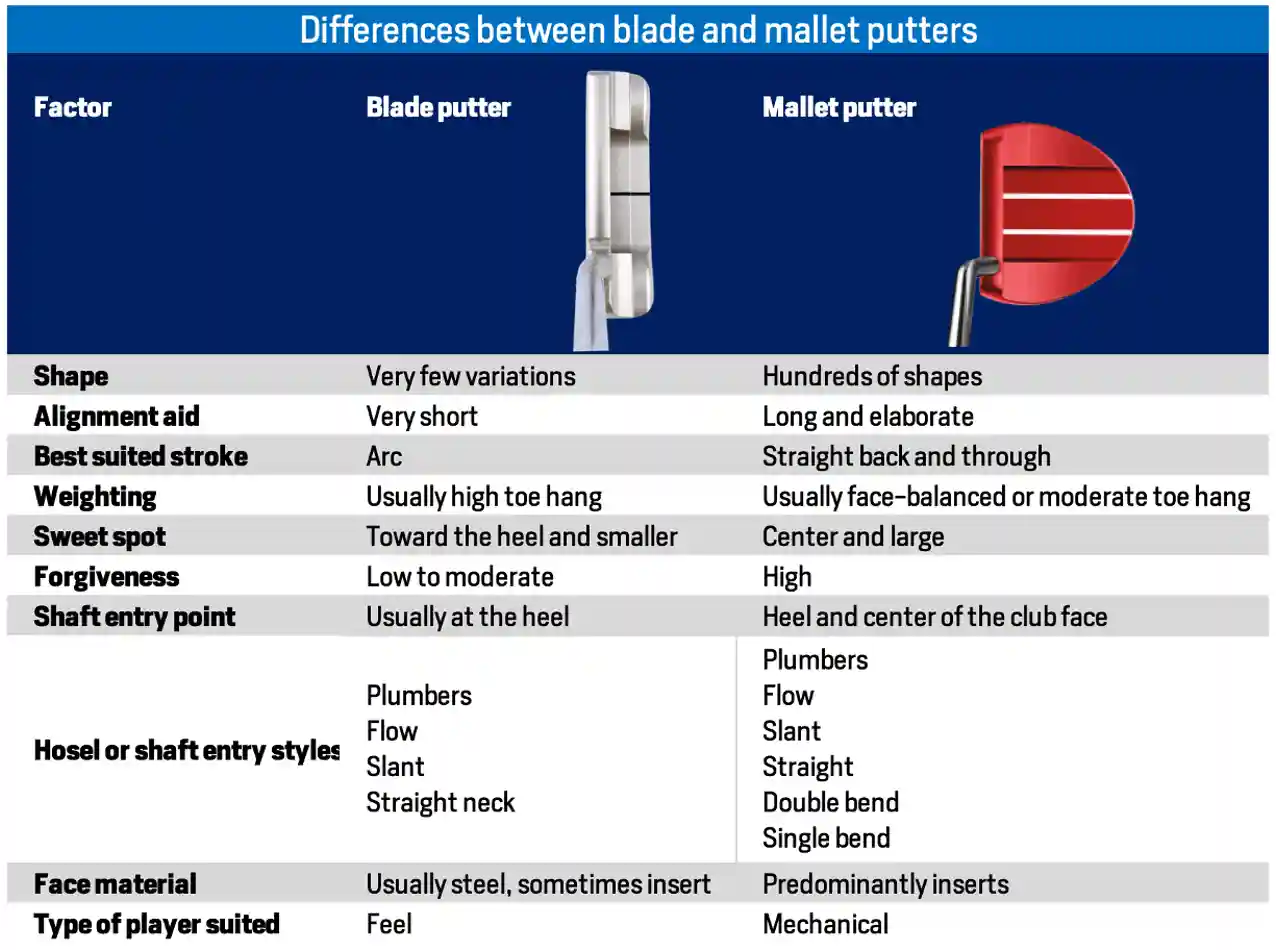
Differences between blade and mallet putters
Blade putters use a traditional club head and are seen as the original putters while mallet putters have a much larger club head in multiple shapes and sizes.
Blade putters have one main shape.
- Most golfers find better distance control with a blade over a mallet from longer than 15 feet from the hole.
- Inside 5 feet, a golfers struggle to make putts with a blade
Mallet putters have many shapes and weights.
- Excellent for aligning your putter head to the starting line of your putt because the back of the club extends further back and has lines and painted effects to make it easy.
- Inside 6 feet, golfers make more putts with a mallet because of the alignment advantage as well as the short stroke to hit the ball due to the extra weight behind the putter.
- Golfers often complain about having less accurate distance control from outside of 15 feet with a mallet.
Blades
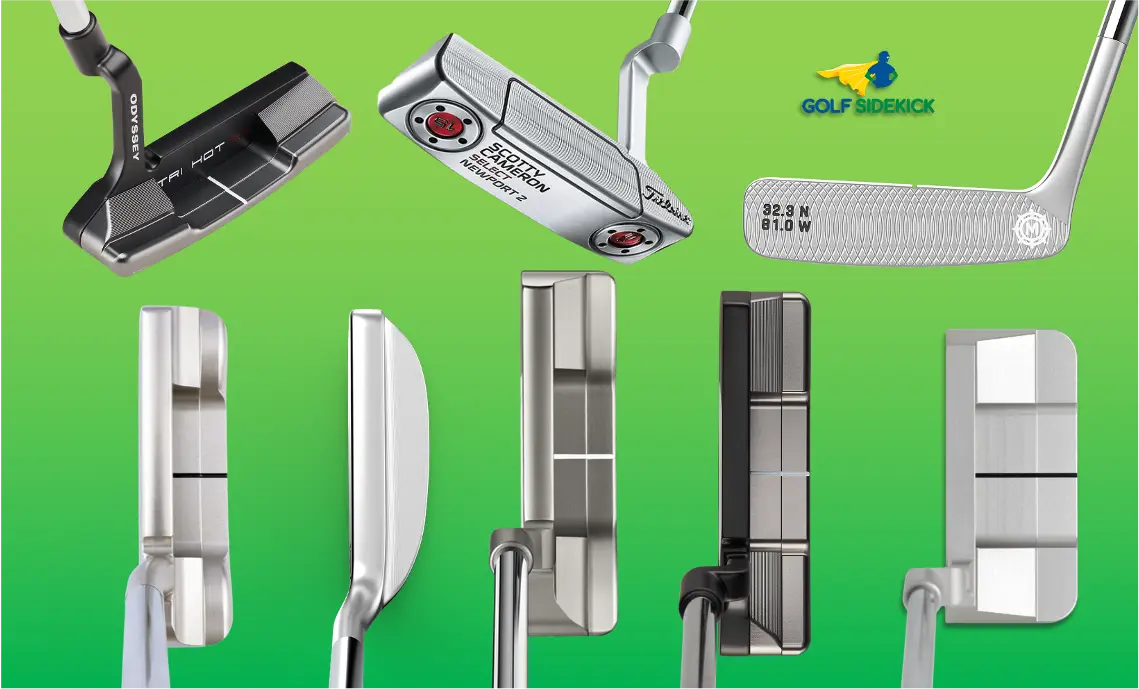
Blade putters have a lot of weight in the toe, so the sweet spot of the putter sits toward the heel of the club.
I learned this after years of hitting the ball too close to the toe, misunderstanding where the sweet spot really was.
Golfers with an arc stroke will often suit a blade putter because of this toe-weighting in the blade. It allows you to move the putter in a rounder stroke, opening the blade a bit on the way back and closing it on the way through.
Mallets
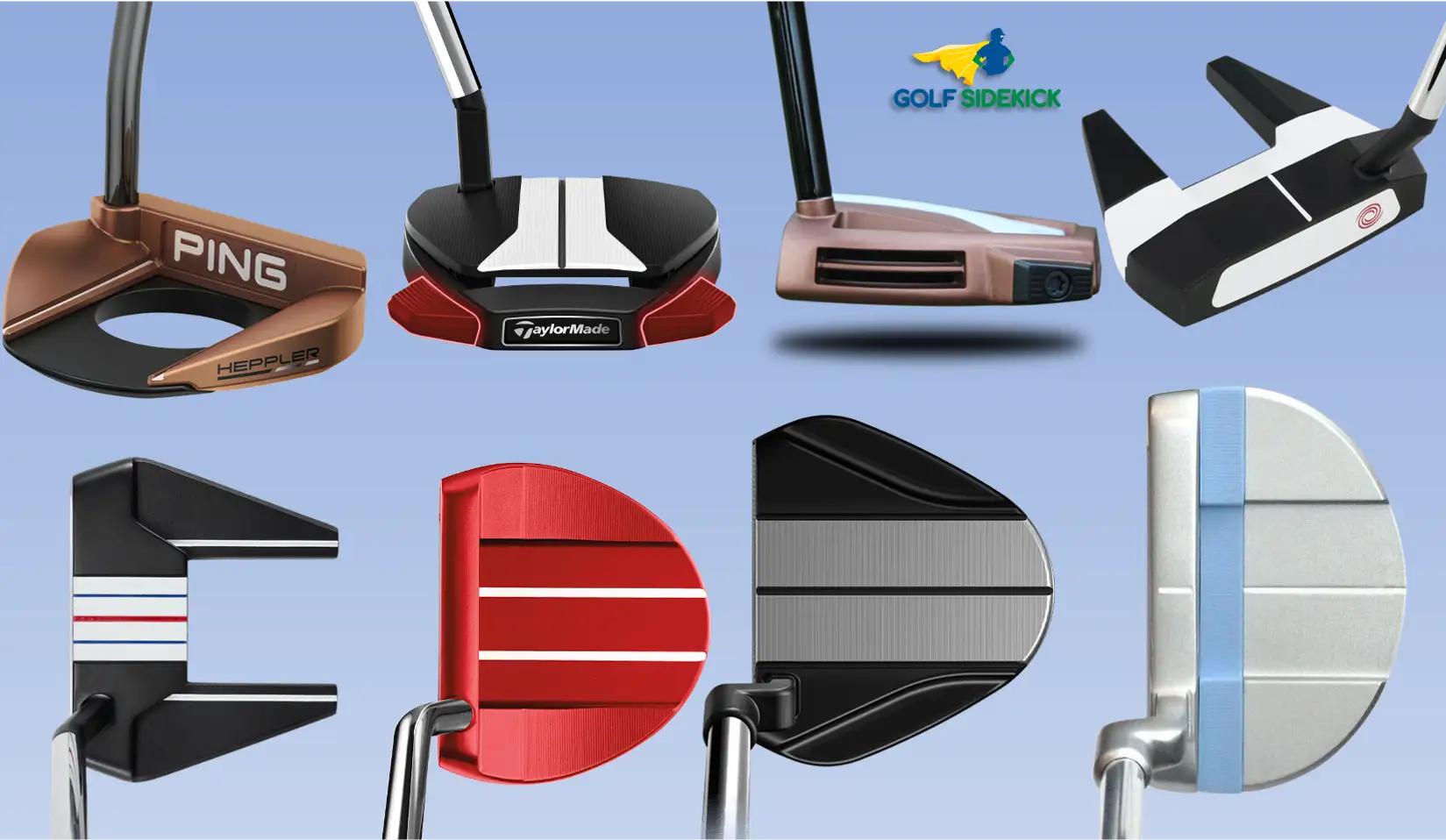
Mallet putters can either feature some toe hang or face-balanced technology. If you rest a face-balanced mallet putter on the table, the club face will face directly to the sky.
The shaft enters the blade putter head at the heel so when you rest the shaft and grip of the putter on a table, the toe hangs down. We call this 'toe hang'.
On the face-balanced mallet, the toe remains level with the heel instead of dropping and hanging down below the heel.
This face-balanced characteristic makes a mallet putter better for golfers with a straight back an through putting stroke.
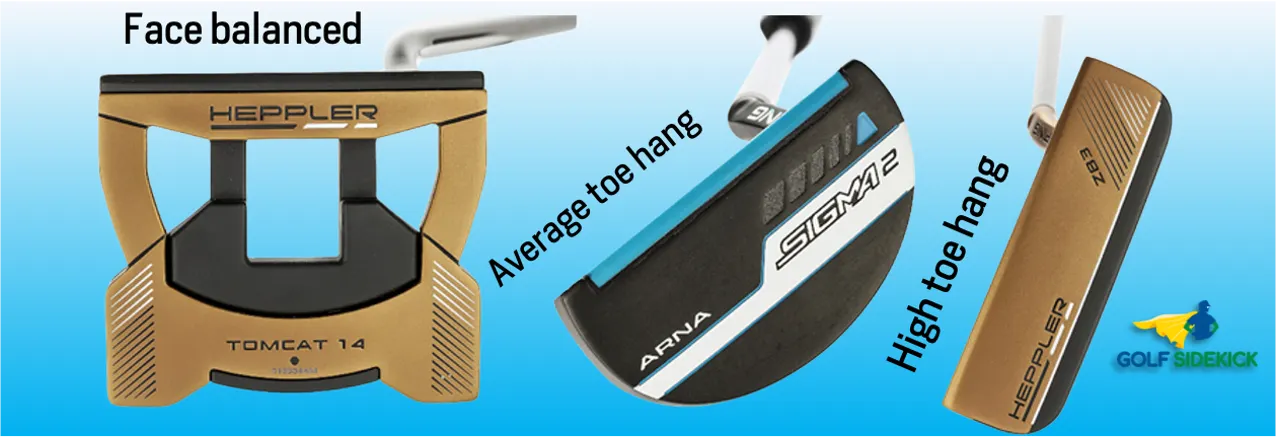
Mallet putters also have a much larger sweet spot than the blade.
Remember, the blade putter sweet spot lies toward the heel because of the toe weighting. But the mallets sweet spot resides in the center of the face because the manufacturers distribute weight away from the club face, into the body of the mallet, creating much more forgiveness through a higher MOI - Moment of Inertia.
The sweet spot on the mallet sit closer to the center of the face, the sweet spot expands into a much larger area around the center so you can mis-hit a putt and still complete the stroke with a much better result than a poorly struck blade putter.
The added weight in a mallet putter prevents twisting and instability of the club face at impact. For these reasons, I find mallet putters suit a mechanical style of golfer, while a blade putter suits a more feel, artistic style of golfer.
Mallet putters offer much longer and larger alignment aids on the back of the club head. The narrow blade putter face prevents the existence of a large visual aid to the back of the club. The blades thickness measures only about an inch or two.
The mallet can extend 4 or 5 inches behind the club face making it much easier to align a mallet to your starting line on the putting green.
Mid Mallet Putter
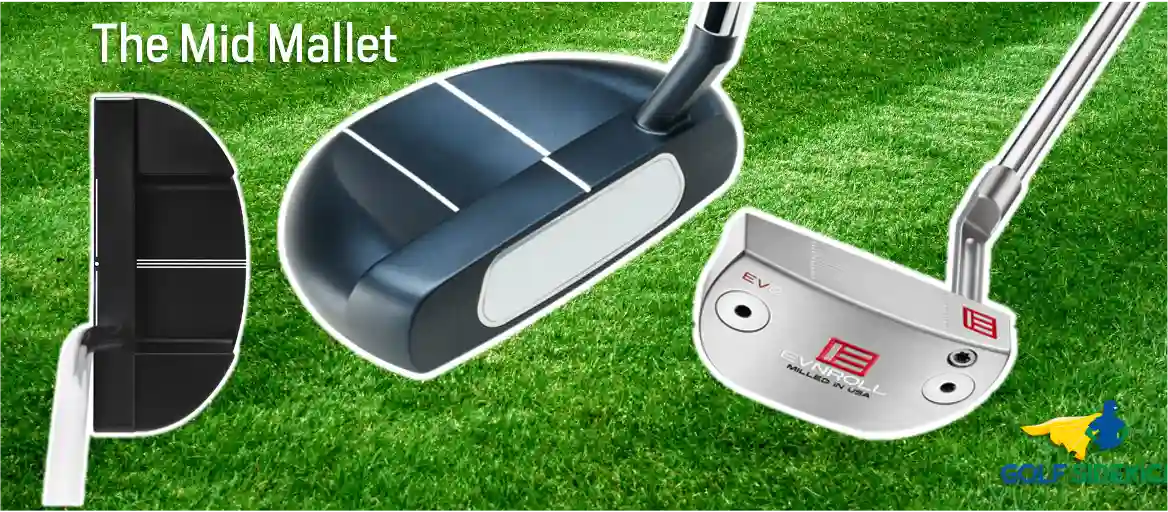
Mid mallet putters are a hybrid of the blade putter and normal, large mallet putter.
Mid mallets have smaller heads and often have more toe hang than the face balanced full sized mallets which makes them more compatible with more types of strokes.
Usually we say the blade putter suits the arc stroke, but the mid mallet can also suit that same stroke. With a full size, face balanced mallet w ewould definitely not recommend it for am arc stroke, only for straight back and through.
Mid mallets boast a more compact head size but have an extended back area for a much larger alignment aid than the blade putter.
Blade putter advancements
Blade putters used to look very simple without much technological advancement for many years. It was always seen as a purist club, just a piece of steel crafted into a putter shape.
In the last few years we've seen the rise of EvnRoll, Cobra, Odyssey and Sik as manufacturers advancing the blade putter into new territory.
SIK have nullified variable shaft lean
SIK Golf offer blade putters which feature Descending Loft Technology (DLT) in their putters. Bryson Dechambeau made Sik famous in recent years after he won with one of their putters.
Descending Loft Technology means the loft of the putter face “descends” from the top to the bottom of the face. SIK putter faces have four flat surfaces milled into the putter face with loft decreasing by one degree (4 degrees to 1) from one surface to the next surface.
No golfer matches the putter’s shaft angle perfectly from address to impact consistently. You will get inconsistent launch angles off the face of your putter, and that causes poor distance control. DLT aims to remedy this by offering a more consistent launch regardless of shaft lean, and thus a ball that finishes closer to the hole.
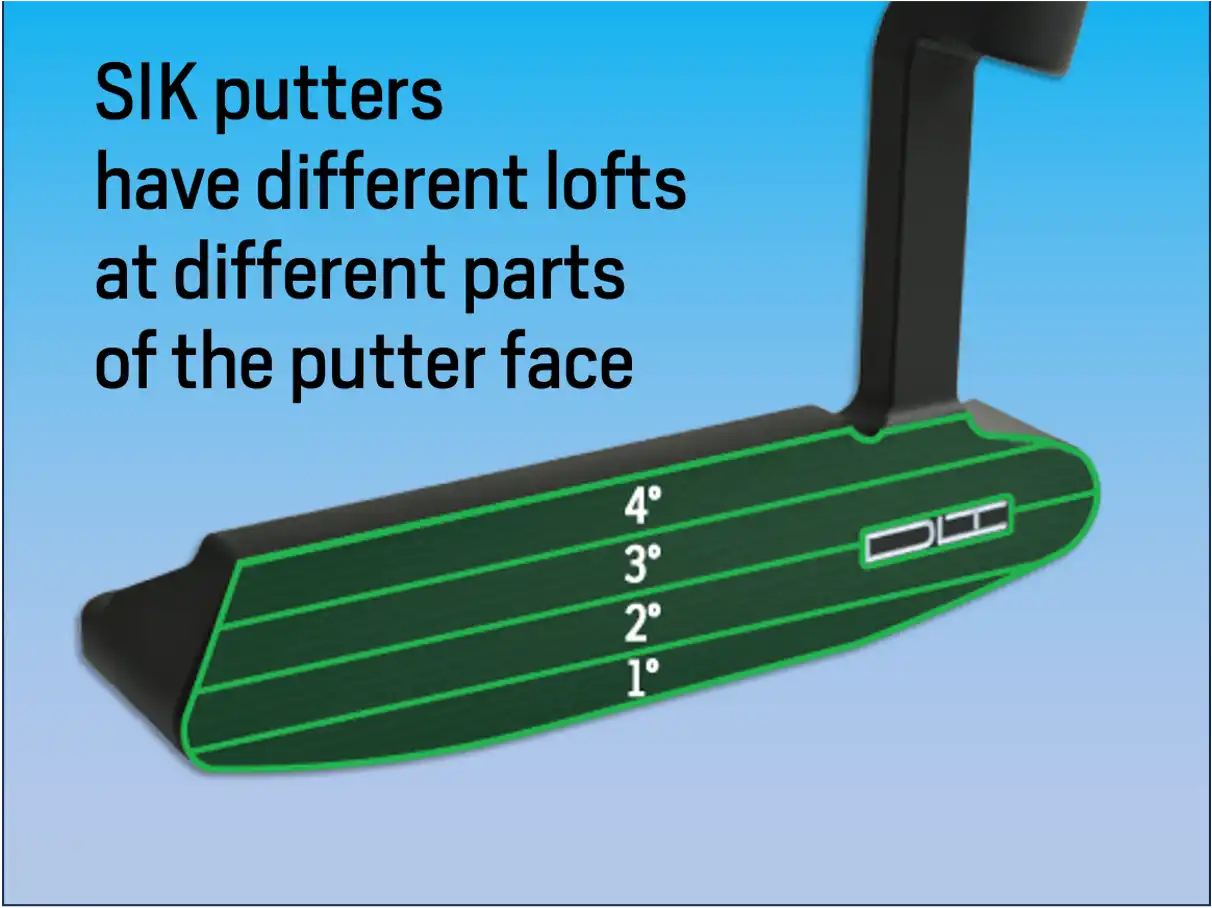
Cobra 3D printed putters using SIK Golf putter faces
Cobra have made advancements in blade putter technology by actually 3D printing their putters while also using the above SIK DLT face technology on the putter for a double whammy of tech upgrades.
SIK licensed out their technology to Cobra to use in their putters.
EVNRoll minimize dispersion and improve distance control
EvnRoll were one of the first movers in the putter face technology for blade putters. They use what they call Sweet Face technology to reduce the dispersion on off center hits, as well as improve distance control form those same poor strikes.
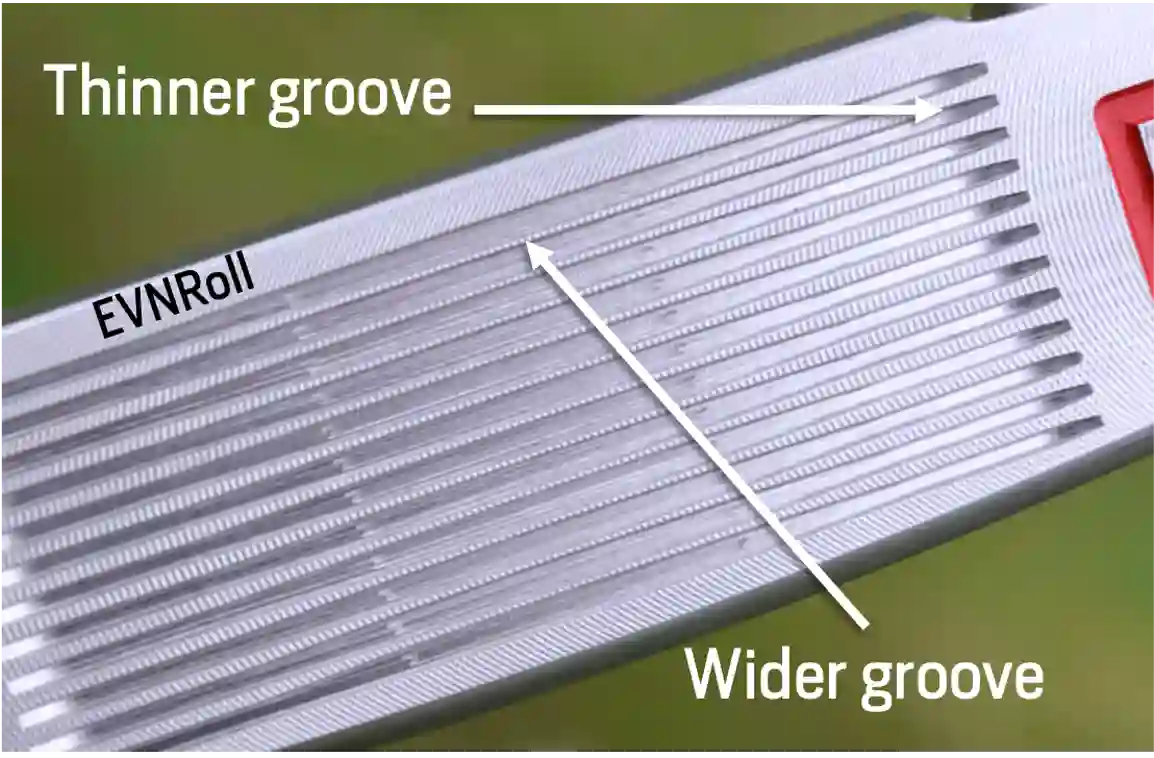
There are channels on the center of the club face of the EVNRoll that run horizontal, from toe to heel. The channels vary in width, with the widest part of the channel being in the middle of the face, as they taper off toward the heel and toe.
Because the channels get narrower away from the center, that spacing gets wider. This increase in contact surface means the club head can transfer energy better on off center strikes away from the sweet spot.
I used to play an EVNRoll Tour Blade 1.2 and I can attest to the consistency especially if you install the counterweighted grip. I prefer the putter I manufacture, the Waddaplaya Bird Dog 2.0 so I moved away from the EVNRoll.
Odyssey have the best inserts in golf
A blade putter (just like the mallet) can come with a solid milled face, or it can have a face insert put in to help add a level of feel and control. Odyssey create putters with urethane inserts which are very popular on Pro golf tours.
Mallet putters have the most advanced technology
From visual aids to face inserts to Center of Gravity to shaft technologies, mallet putters are packed with innovations to help golfers of all levels.
Odyssey have been the biggest disrupters in the putting world starting with their totally novel 2-Ball putter in 2001. I remember back then, when I was 16, this crazy design became one of the most popular putters at every golf course.
That 2001 2-Ball putter sparked huge change across the putting landscape where every company needed to come up with the least traditional designs possible.
One of the most impressive advancements in mallet putters in the last 2-3 years has been from the very same Odyssey with the 2-Ball Triple Track. Odyssey iterated multiple times and tested many varieties of alignment aid, but found the Triple Track performs as the most effective alignment aid possible.
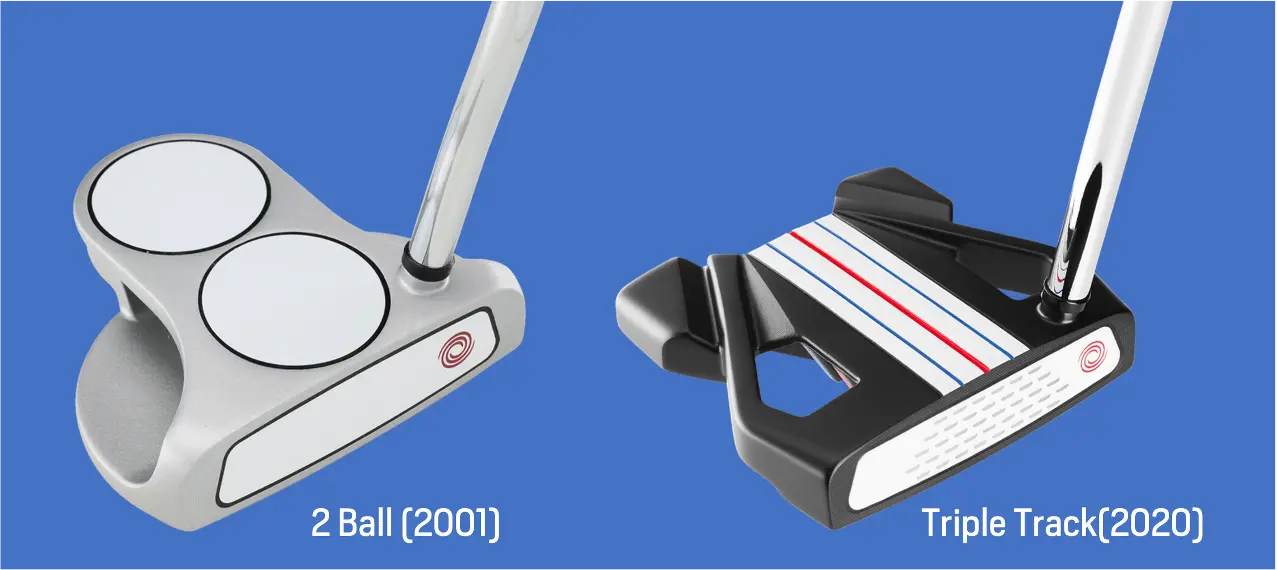
Using the Triple Track putter with the Triple track Callaway golf balls has been shown in our testing with all handicaps to increase putts made inside 8 feet comparing to putting without line on the ball and no Triple Track putter. Much like the 2-Ball spawned hundreds of copy-cats, Odyssey have been copied by countless companies after the Triple Track was released.
The high moment of inertia (MOI) that mallet putters offer translates to more forgiveness compared to traditional blade putters.
A mallet putter is much larger in size than a blade. When the original mallet putters were created, they were semi-circular, with the rear of the club extending backwards to create more alignment possibility.
Modern mallet putters have changed shape and you can find designs that look like animal fangs, space ships, and even square shapes coming out the back of the putter. The mallet putter heads are growing larger and larger.
How Does Your Putting Stroke Suit a Putter?
If you have an arc type putting stroke, it makes more sense to go with a blade style putter.
You can fan open the clubface and then close it as you go through impact. Straight back and straight through strokes do better with the mallet design.
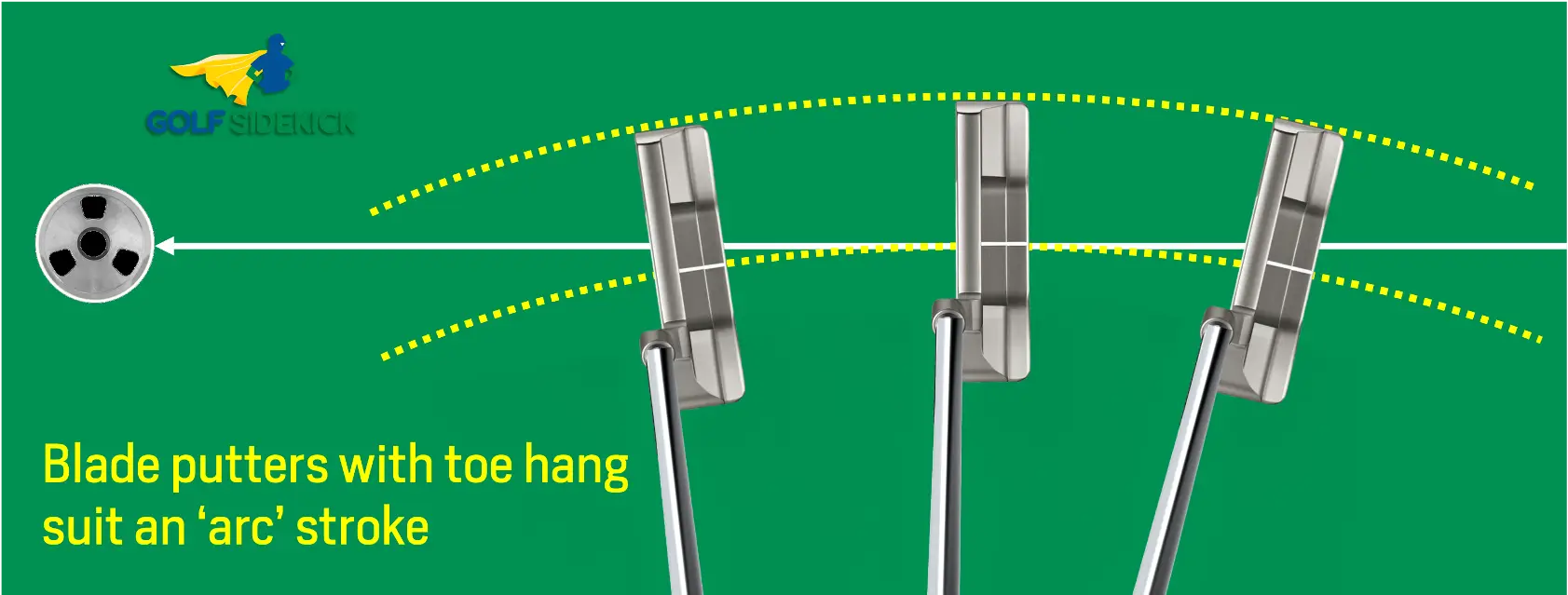
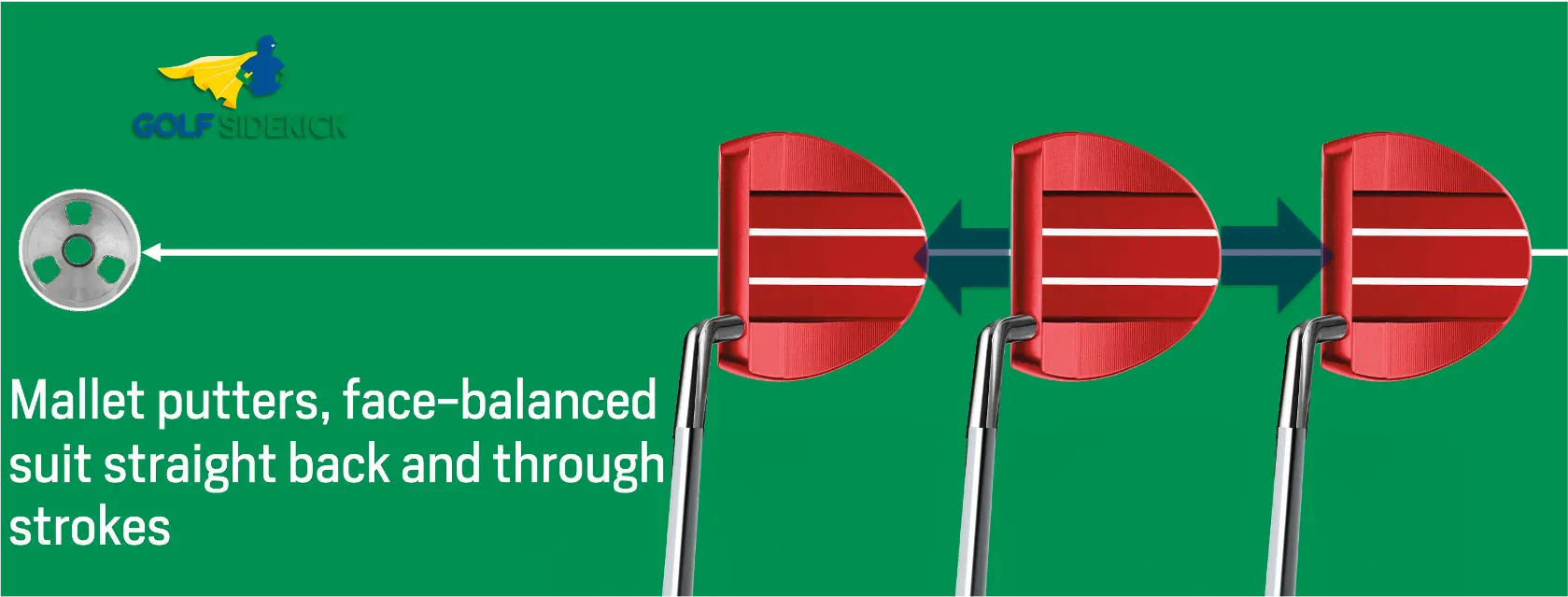
Should I Get A Putter Fitting?
The putter remains the most overlooked club for a fitting in the golf bag.
Putter fittings are extremely beneficial but only if you go to a brand-agnostic fitter. Being forced into a certain brand can limit your potential. Someone like Eric Chong of Impact Golf Malaysia will fit his clients into a brand and model that will work FOR THEM. A great fitter will assess YOUR stroke and your tempo and fit a putter to you.
The type of putter that the pro fitter will give to you will take into account your tempo, your stroke style, your height, hand position, release and posture. You cannot copy paste a formula on a personal club like the putter so a fitting can benefit you immensely.
You can always get away with finding a putter that looks and feels good but you can take out the guesswork by seeing a top, reputable fitter.
Conclusion
Blades and mallets contrast each other in so many ways. The easiest way to decide on the putter for you is to start with your stroke type and work from there.
How good does the putter feel in your hands? How does the weight feel? Swing the putter back and forth a few times. You'll feel things good and bad and from there, you start the process.
Pay attention to feel, look, and the type of putting stroke you have if you want to choose a great putter.
